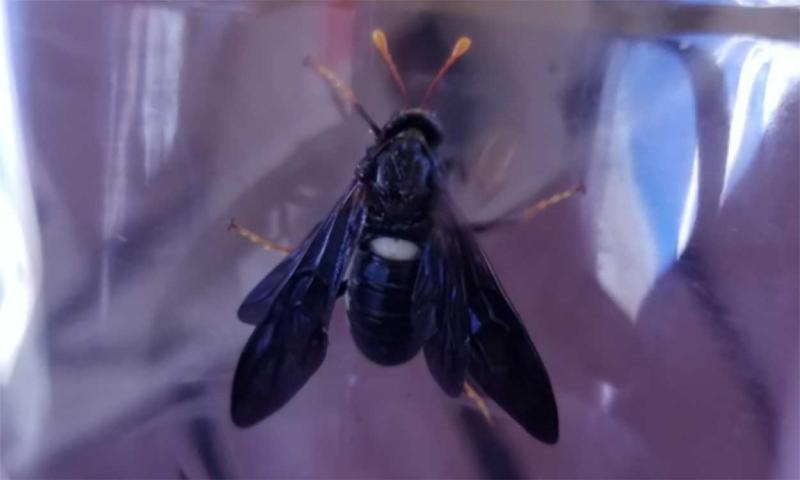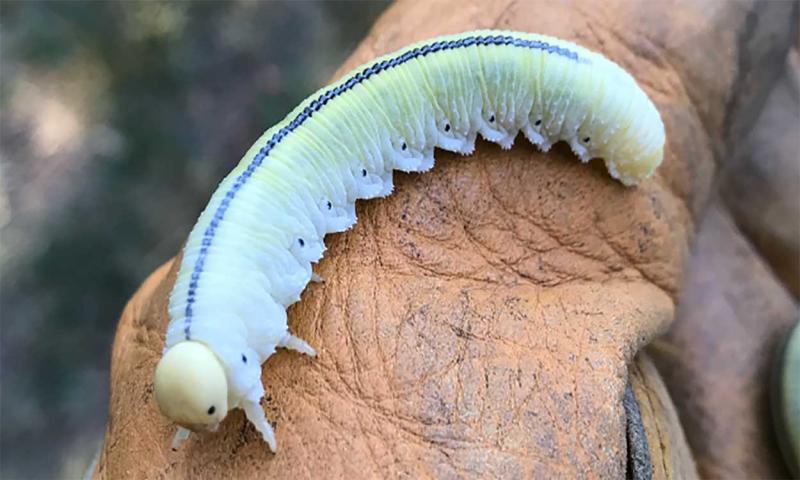
This spring, there have been multiple reports of people seeing large fly-like insects in their yards. These insects are sawflies, and all reports thus far have been the elm sawfly (Cimbex americana).
Sawflies are a type of stingless wasp that feed on plants. They get their name from the saw-like organ (ovipositor) on the abdomen of females that they use to lay eggs.
The elm sawfly is a species that is native to South Dakota and mostly feeds on elm trees. The feeding damage from elm sawflies is usually minimal so management of this insect is rarely necessary.
Profile

Adult male elm sawflies are about ¾ of an inch long and have a smooth, dark-colored body. They have a large white-yellow spot on their back and orange-tipped legs and antennae (Figure 1). The female adult elm sawflies have similar coloration as the males with the exception of white segments on the abdomen (Figure 2). Elm sawfly larvae resemble caterpillars and may grow up to 2 inches long. They are pale yellow-green in color with a black dorsal stripe and black spots along the sides (Figure 3). The larvae often curl up tightly when at rest or when disturbed.
Elm sawflies have only one generation per year. They first appear as adults in May and June to mate and lay eggs. The adults are short-lived and feed on tree sap during this time. The eggs hatch in about a week and the larvae feed on tree foliage for the rest of the growing season. In the fall, the larvae drop to the ground where they spin a cocoon and overwinter in the soil. They then pupate until the following spring and emerge as new adults.
Management

Although the need for management is very rare, elm sawfly larvae can sometimes cause considerable defoliation to infested trees when present in large numbers. Small trees are most susceptible and could be stunted due to feeding injury.
Larvae may be physically removed and disposed of to reduce feeding pressure. However, this is not practical for larger trees, which could warrant an insecticide application. If treating with an insecticide, be sure to use products that are specifically labeled for treating sawflies.


